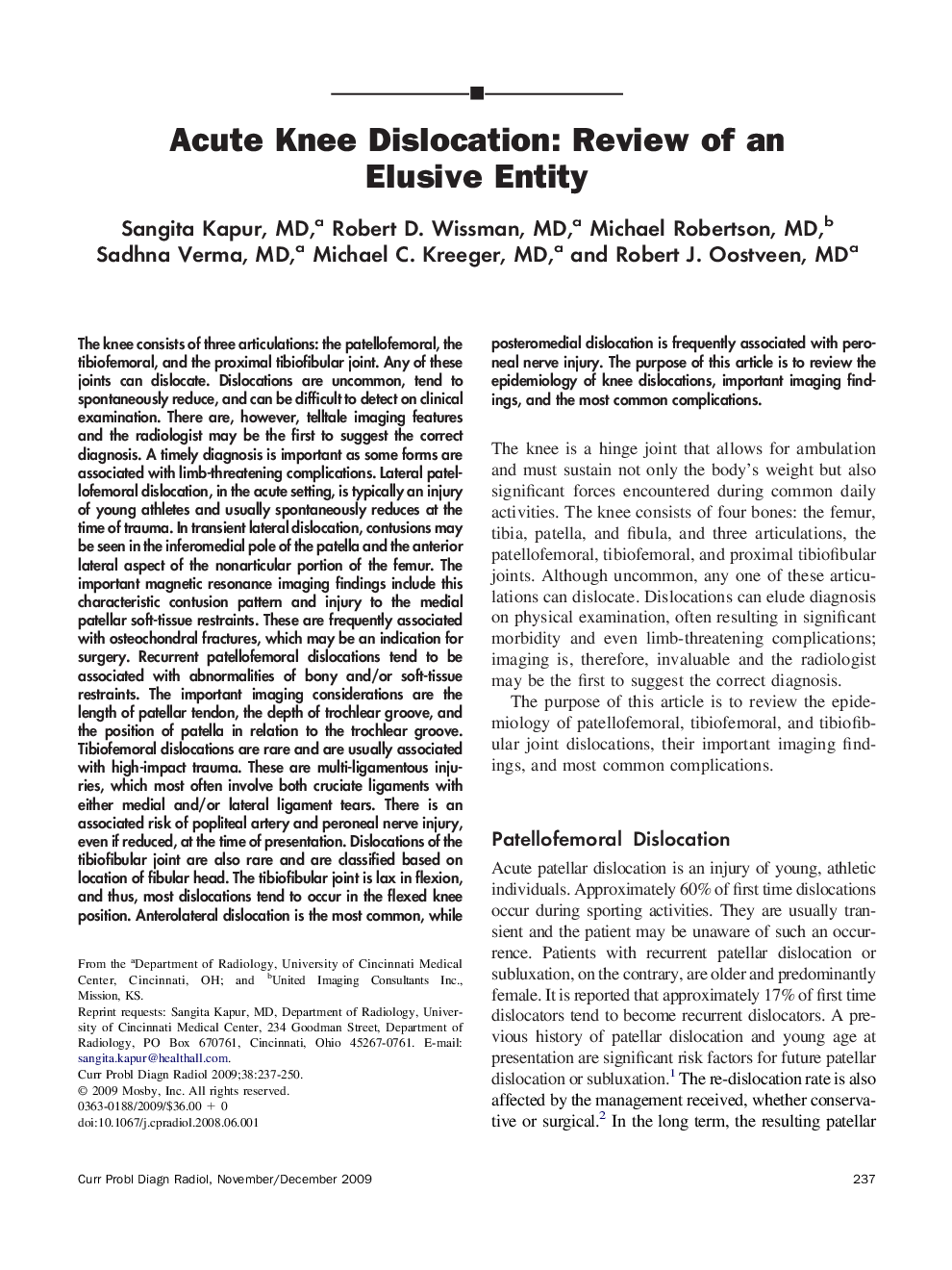| Article ID | Journal | Published Year | Pages | File Type |
|---|---|---|---|---|
| 4223781 | Current Problems in Diagnostic Radiology | 2009 | 14 Pages |
The knee consists of three articulations: the patellofemoral, the tibiofemoral, and the proximal tibiofibular joint. Any of these joints can dislocate. Dislocations are uncommon, tend to spontaneously reduce, and can be difficult to detect on clinical examination. There are, however, telltale imaging features and the radiologist may be the first to suggest the correct diagnosis. A timely diagnosis is important as some forms are associated with limb-threatening complications. Lateral patellofemoral dislocation, in the acute setting, is typically an injury of young athletes and usually spontaneously reduces at the time of trauma. In transient lateral dislocation, contusions may be seen in the inferomedial pole of the patella and the anterior lateral aspect of the nonarticular portion of the femur. The important magnetic resonance imaging findings include this characteristic contusion pattern and injury to the medial patellar soft-tissue restraints. These are frequently associated with osteochondral fractures, which may be an indication for surgery. Recurrent patellofemoral dislocations tend to be associated with abnormalities of bony and/or soft-tissue restraints. The important imaging considerations are the length of patellar tendon, the depth of trochlear groove, and the position of patella in relation to the trochlear groove. Tibiofemoral dislocations are rare and are usually associated with high-impact trauma. These are multi-ligamentous injuries, which most often involve both cruciate ligaments with either medial and/or lateral ligament tears. There is an associated risk of popliteal artery and peroneal nerve injury, even if reduced, at the time of presentation. Dislocations of the tibiofibular joint are also rare and are classified based on location of fibular head. The tibiofibular joint is lax in flexion, and thus, most dislocations tend to occur in the flexed knee position. Anterolateral dislocation is the most common, while posteromedial dislocation is frequently associated with peroneal nerve injury. The purpose of this article is to review the epidemiology of knee dislocations, important imaging findings, and the most common complications.
